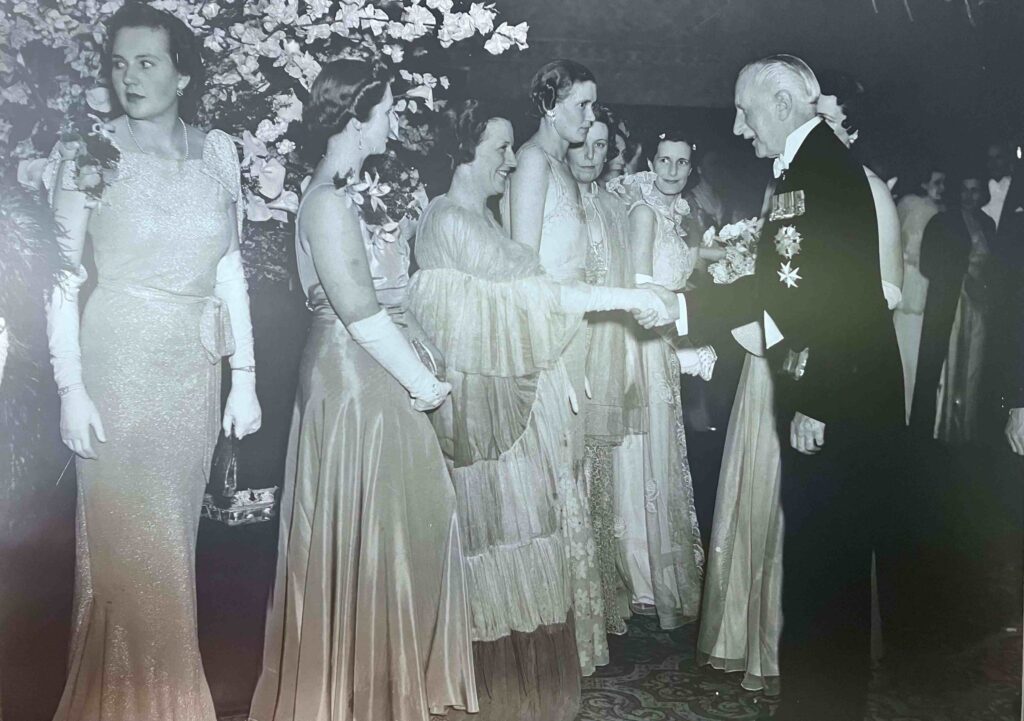
The Black and White Committee: A Tapestry of Sydney’s Social History
Since 1936, the Black and White Committee has been weaving a rich tapestry of Sydney’s social history, raising over four million dollars for the Royal Blind Society of New South Wales. This remarkable journey offers a fascinating glimpse into the evolution of Sydney society and the enduring power of community engagement.
In the pre-television era of 1936, Sydney was a far cry from the cosmopolitan hub we know today. It was in this setting that a group of pioneering women, led by Mrs. Eric (Dora) Sheller, organized the inaugural White Ball. Picture the scene: gentlemen in crisp white tie, ladies in flowing white gowns – it was an instant sensation that set the tone for decades to come.
From its inception, the committee organized a diverse array of events. Bridge parties, fashion parades, and tennis days became staples of Sydney’s social calendar. After World War II, they expanded their repertoire to include race days, exhibitions, and revues, each event a reflection of the changing times.
The Black and White Ball quickly became the jewel in the committee’s crown. Held at the Trocadero on George Street, the 1936 ball was a spectacle that captured the city’s imagination. Newspapers devoted pages to the event, their reports brimming with superlatives and photographs. Many features of this first ball became cherished traditions: the presence of the Governor, the formal dress code, awards for the best gowns, and extensive media coverage.
Even war couldn’t dampen the committee’s spirit for long. After a brief hiatus, they returned with the 1946 White Ball at the Trocadero, notable for the largest number of new frocks seen at a ball since the war’s end. It was in 1948 that President Mrs. Marcel (Nola) Dekyvere introduced the iconic black and white color scheme.
The 1950s and 60s saw the committee reach new heights. Under Nola Dekyvere’s long presidency (1951-1970), the Black and White Committee became synonymous with elegance and efficiency. Her diplomatic skills and managerial prowess were so renowned that even American comedian Bob Hope sought her help for his 1955 Sydney visit.
Innovation continued to be a hallmark of the committee. The 1956 ball introduced the Derby, a whimsical mock horse race using felt-bottomed wooden cut-outs attached to fishing lines. Fittingly, the first Derby Cup winner in 1957 was Judy White, niece of Ronnie MacKellar.
The 1970s ushered in an era of theatrical flair. Director Richard Lyle’s revues became the talk of the town, with committee members donning costumes to perform favorite songs. A particularly memorable moment came in 1977 when Mrs. Andrew Peacock and Mrs. William McMahon channeled Jane Russell and Marilyn Monroe in a risqué rendition of “Two Little Girls from Little Rock.”
As Sydney entered the heady 1980s, one ball per year was no longer enough. Marno Parsons A.M., president from 1976-1990, introduced the Champagne Ball, adding extra sparkle to the committee’s calendar. In 1985, she also launched the Women of Achievement Luncheon, broadening the committee’s appeal and impact.
The 1990s brought both challenges and changes. Under Nancy Melick’s presidency (1991-1999), the committee adapted to shifting social norms. The ball moved to September, and the married and singles categories for best gown awards were merged. Despite the informality of nineties trends, the ball maintained its relevance in Sydney’s social scene.
Today, under the guidance of Susan Diver, the Black and White Committee continues to evolve. Four major events now anchor their annual calendar, supplemented by numerous cocktail functions and exhibitions. The committee has embraced change, encouraging younger members to join and expanding their database to include corporations.
Throughout its history, the Black and White Committee has demonstrated a remarkable ability to adapt while honoring tradition. As Nancy Melick aptly put it, “We try to stick to tradition as much as possible. Some things are going to change whether we like it or not. But the girls still like to get dressed up, they still like to be jockeys. And the ball is still the ball.”
From its glamorous beginnings to its current status as Australia’s most enduring fund-raiser, the Black and White Committee stands as a testament to the power of community, adaptability, and enduring elegance. It’s not just a part of Sydney’s history – it’s a living, evolving institution that continues to shape the city’s social and philanthropic landscape.
